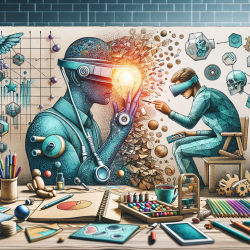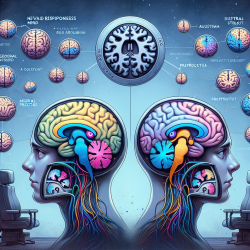Introduction
In the evolving landscape of education, the balance between digital and physical spaces is becoming increasingly significant. The research article "Protecting the University as a Physical Place in the Age of Postdigitization" highlights the importance of maintaining physical spaces in educational settings, even as digital learning becomes more prevalent. This blog explores how practitioners can enhance their skills by integrating these insights into their practice, ensuring that children benefit from a holistic educational experience.
The Value of Physical Spaces
Physical spaces in education are not merely venues for learning; they are integral to the development of community, culture, and identity. The research underscores that while digital tools offer accessibility and convenience, they cannot fully replicate the nuanced interactions and experiences that occur in physical settings. For practitioners, this means recognizing the irreplaceable value of face-to-face interactions and the role they play in fostering social skills, empathy, and collaboration among children.
Implementing Research Insights
Practitioners can leverage the findings of this research by:
- Creating Hybrid Models: Develop educational models that combine digital tools with in-person interactions. This approach ensures that children benefit from the flexibility of digital learning while still engaging in the rich, interpersonal experiences that physical spaces offer.
- Emphasizing Community Building: Use physical spaces to cultivate a sense of community and belonging. Activities that encourage collaboration and interaction can help children develop social skills and a sense of identity within their educational environment.
- Fostering Critical Thinking: Encourage discussions and activities that require critical thinking and problem-solving, which are often more effectively facilitated in person. This can help children develop cognitive skills that are essential for their overall growth.
Encouraging Further Research
While the current research provides valuable insights, it also highlights the need for ongoing exploration into the interplay between digital and physical educational spaces. Practitioners are encouraged to engage in further research to better understand how these environments can be optimized to support diverse learning needs. This could involve studying the impact of different educational models on student outcomes or exploring innovative ways to integrate technology into physical learning environments.
Conclusion
The research on protecting physical spaces in education offers critical insights for practitioners seeking to enhance their skills and improve outcomes for children. By valuing and integrating physical spaces into educational models, practitioners can create environments that support holistic development and foster a sense of community and belonging. As the educational landscape continues to evolve, it is essential to strike a balance between digital innovation and the irreplaceable benefits of in-person interactions.
To read the original research paper, please follow this link: Protecting the University as a Physical Place in the Age of Postdigitization.










